Search results for: 7Ps of Marketing
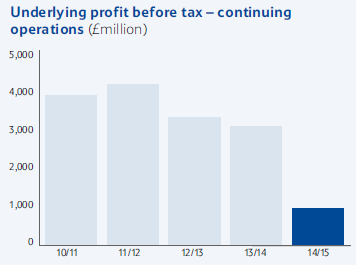
SWOT is an abbreviation that is interpreted as strengths, weaknesses, opportunities and threats related to businesses. The table below illustrates the main points of Tesco SWOT analysis: Strengths 1. Leadership position in the UK 2. Effective online operations 3. Clubcard as an effective consumer information tool 4. Strong property portfolio Weaknesses 1. Weak financial performance 2. Serious damage to the brand image due to commercial income scandal in 2015 3. Reliance on the UK market 4. Diminished employee morale Opportunities 1. Pursuing international market expansion strategy 2. Increasing presence in financial services industry 3. Increasing non-food retail range 4. Enhancing the effectiveness of the marketing strategy Threats 1. Inability of the new leadership to turn over the business 2. Inability to sustain cost leadership competitive advantage 3. Currency fluctuations 4. Emergence of new ethics-related problems Tesco SWOT analysis Strengths 1. Tesco is the biggest retailer in the UK with a grocery market share of 27.9 per cent. Its closest competitor Sainsbury’s has the market share of only 16.6 per cent and the market share of Walmart-owned ASDA is equal to 16.4 per cent.[1] Possessing the largest market share is an important strength regardless of the industry and this position allows Tesco to generate substantial revenues, given it addresses 7Ps of marketing mix in an appropriate manner. 2. The company utilizes online sales channel with a high level of efficiency. Tesco was among the first retailers in the UK to successfully implement online sales channel and currently, revenues generated via online sales account for a solid share of the total revenues. Specifically, in 2015 Tesco online grocery market grew ahead of the market at 20 per cent although the company posted pre-tax loss of GBP 6.37 billion during the same year.[2] The growth of online sales ahead of the market despite…
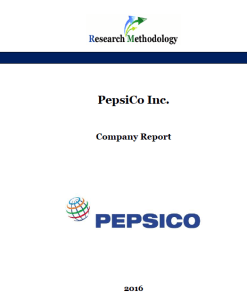
PepsiCo Inc. is a US-based global food, snack and beverage company that was incorporated in Delaware in 1919 and reincorporated in North Carolina in 1986. Today, PepsiCo brand portfolio includes a range of globally famous brand names such as Pepsi, Lays, Lipton, Doritos, Tropicana, Walkers, Miranda, Cheetos and others. In total, PepsiCo portfolio comprises 22 brands and each of these brands have generated at least one billion USD in retail sales in 2015. Products belonging to PepsiCo portfolio are consumed about one billion times each day in more than 200 countries and territories. PepsiCo’s mission statement is formulated as “to provide consumers around the world with delicious, affordable, convenient and complementary foods and beverages from wholesome breakfasts to healthy and fun daytime snacks and beverages to evening treats” The company employs 263,000 people globally, including approximately 110,000 people within the United States.In 2015, PepsiCo achieved 5 per cent organic revenue growth with a cash flow of more than USD 8.1 billion. About 53 per cent of net revenues were generated from food business, whereas net revenues generated from the beverage businesses amounted to 47 per cent. PepsiCo has major impact in the US economy. The company has been acknowledged as the Number One contributor to retail sales growth in the U.S. in 2015, generating more growth than the next 15 largest food and beverage manufacturers combined. PepsiCo Report contains the application of the major analytical strategic frameworks in business studies such as SWOT, PESTEL, Porter’s Five Forces, Value Chain analysis and McKinsey 7S Model on PepsiCo. Moreover, the report contains analyses of PepsiCo’s business strategy, leadership and organizational structure and its marketing strategy. The report also discusses the issues of corporate social responsibility. 1. Introduction 2. Business Strategy 3. Leadership and Organizational Structure 4. SWOT Analysis 4.1 Strengths 4.2 Weaknesses…
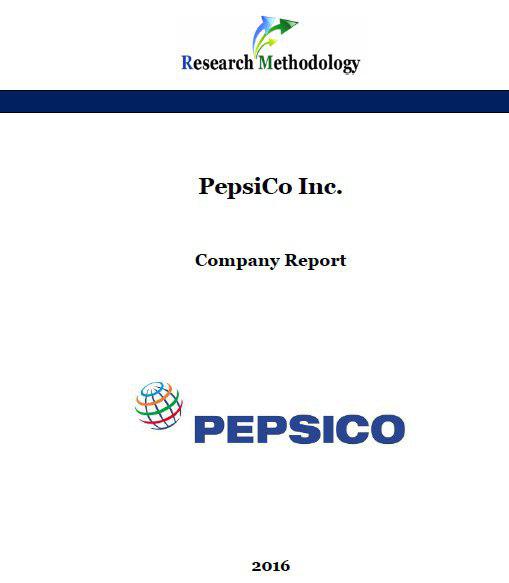
PepsiCo Inc. is a US-based global food, snack and beverage company that was incorporated in Delaware in 1919 and reincorporated in North Carolina in 1986. Today, PepsiCo brand portfolio includes a range of globally famous brand names such as Pepsi, Lays, Lipton, Doritos, Tropicana, Walkers, Miranda, Cheetos and others. In total, PepsiCo portfolio comprises 22 brands and each of these brands have generated at least one billion USD in retail sales in 2015. Products belonging to PepsiCo portfolio are consumed about one billion times each day in more than 200 countries and territories (Annual Report, 2015). PepsiCo’s mission statement is formulated as “to provide consumers around the world with delicious, affordable, convenient and complementary foods and beverages from wholesome breakfasts to healthy and fun daytime snacks and beverages to evening treats” The company employs 263,000 people globally, including approximately 110,000 people within the United States. In 2015, PepsiCo achieved 5 per cent organic revenue growth with a cash flow of more than USD 8.1 billion. About 53 per cent of net revenues were generated from food business, whereas net revenues generated from the beverage businesses amounted to 47 per cent (Annual Report, 2015). PepsiCo has major impact in the US economy. The company has been acknowledged as the Number One contributor to retail sales growth in the U.S. in 2015, generating more growth than the next 15 largest food and beverage manufacturers combined. PepsiCo Report contains the application of the major analytical strategic frameworks in business studies such as SWOT, PESTEL, Porter’s Five Forces, Value Chain analysis and McKinsey 7S Model on PepsiCo. Moreover, the report contains analyses of PepsiCo’s business strategy, leadership and organizational structure and its marketing strategy. The report also discusses the issues of corporate social responsibility. 1. Introduction 2. Business Strategy 3. Leadership and Organizational Structure…
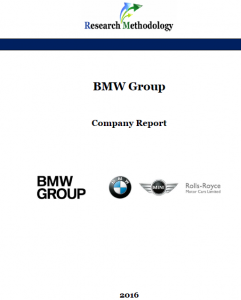
Bayerische Motoren Werke Aktiengesellschaft (BMW AG) is the parent company of the BMW Group, a global automobile manufacturer and seller based in Munich Germany. Originally founded as Bayerische Flugzeugwerke AG (BFW) in 1916 the company has emerged as one of the leading brands in the global market of luxury cars. BMW Group owns famous BMW, MINI and Rolls-Royce Motor Car Limited brands. In 2015 the company sold its products to more than 2.2 million people in more than 150 countries, an increase of 6.1 per cent compared to the previous year. BMW Group generated more than 93 billion EUR revenues in 2015, a significant increase of 14.6 per cent compared to the previous year. BMW net profit in 2015 increased by 10 per cent to around 6.4 billion EUR. The company employs 122,244 people globally and it has a hierarchical organizational structure. BMW Group operations are divided into four business segments: automotive, motorcycles, financial services and other entities. The company has 30 manufacturing sites in 14 countries and robotic technology plays an instrumental role in BMW manufacturing process. BMW Group pursues product differentiation business strategy and differentiates its vehicles on the basis of design, performance and advanced features and functionalities. Moreover, high level of integration of information technology and internet, as well as, electromobility represent solid grounds of BMW Group competitive advantage. At the same time, BMW Group has certain weaknesses that include a lack of portfolio diversification with only three brands, a high level of vulnerability to economic crises due to the premium pricing strategy and the lack of strategic partnerships with other businesses within and outside of automobile industry. BMW Group Report contains the application of the major analytical strategic frameworks in business studies such as SWOT, PESTEL, Porter’s Five Forces, Value Chain analysis and McKinsey 7S Model…
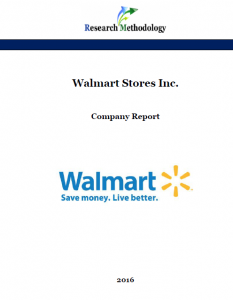
Walmart Stores Inc. is a US-based global discount supermarket chain that has more than 11,000 stores in 27 countries and serves nearly 260 million customers each week under 72 banners (Annual Report, 2015). Founded in 1962 by Sam Walton, today Walmart employs 2.2 million people globally and it is the world’s largest retailer. Walmart U.S. delivered net sales of USD 288 billion, a more than 3 percent increase in the fiscal year of 2015 and consolidated fiscal revenues equaled to USD 486 billion (Annual Report, 2015). During the fiscal year of 2015 Walmart revenues grew by more than USD9 billion to nearly USD 486 billion and earnings per share were USD 4.99, a nearly 3 percent increase from the previous year . On a constant currency basis, net sales surpassed USD 141 billion, while operating income increased to more than USD6 billion (Annual Report, 2015). ‘Everyday low prices’ is Walmart’s marketing communication message and this message serves as a guiding principle for Walmart business strategy. Specifically, Walmart strives to achieve cost leadership by the use of economies of scale to a great extent, exercising its huge bargaining power in dealing with suppliers and paying low wages to employees. Walmart Report contains the application of the major analytical strategic frameworks in business studies such as SWOT, PESTEL, Porter’s Five Forces, Value Chain analysis and McKinsey 7S Model on Walmart. Moreover, the report contains analyses of Walmart’s business strategy, leadership and organizational structure and its marketing strategy. The report also discusses the issues of corporate social responsibility. 1. Introduction 2. Business Strategy 3. Leadership and Organizational Structure 4. SWOT Analysis 4.1 Strengths 4.2 Weaknesses 4.3 Opportunities 4.4 Threats 5. PESTEL Analysis 5.1 Political Factors 5.2 Economic Factors 5.3 Social Factors 5.4 Technological Factors 5.5 Environmental Factors 5.6 Legal Factors 6. Marketing Strategy…

The term ecosystem was coined by British botanist Arthur Tansley in 1930s to describe community of organisms that interact with each-other and their environments. Later in early 1990s, James F. Moore applied the term ecosystem into business environment and used the term business ecosystem for the first time. Nowadays, the term business ecosystem is extensively used in high tech industry. Business ecosystem can be defined as “a network of different entities that are dynamic and interact with each other to create and exchange sustainable value”[1]. Specifically, it is a network of different entities that provide greater effectiveness and capacity than the sum of its individual elements. Alternatively, business ecosystem is “a purposeful business arrangement between two or more entities (the members) to create and share in collective value for a common set of customers.”[2] Moore (1997)[3] divides business ecosystems into the following four stages: 1. The pioneering stage, where the ecosystem is formed. 2. The expansion stage, as the ecosystem extends to achieve maximum market coverage and critical mass. 3. The authority stage, where the ecosystem matures. 4. The renewal or death stage, where species must work together to radically improve or reinvent the ecosystem to sustain its ongoing growth. Ecosystem creates entry barriers for new market players, because potential entrants will have to compete not only with specific products and services, but with the entire system of complementary businesses, products and services. Business ecosystem can be divided into three large categories: – Solution ecosystem is a type of ecosystem that produces products and services. – Transaction ecosystem is based on a digital platform that integrates suppliers to the platform and platform users. For example, ride-hailing platforms such as Uber and Lyft connect drivers with riders. – Hybrid ecosystem combines features of both solution ecosystem and hybrid ecosystem. Dimensions…
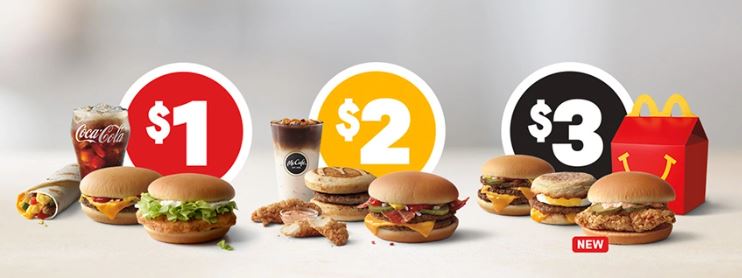
McDonald’s segmentation, targeting and positioning is one of the integral components of its marketing strategy. Segmentation involves dividing population into groups according to certain characteristics, whereas targeting implies choosing specific groups identified as a result of segmentation to sell products. Positioning refers to the selection of the marketing mix the most suitable for the target customer segment. McDonald’s uses the following types of segmentation: 1. Multi-segment positioning. The fast food chain exploits multiple segments in terms of geography and demographics at the same time. The fast food giant develops items that appeals to the needs and preferences of each segment. 2. Adaptive positioning. McDonald’s periodically repositions its products according to changes in customer tastes and preferences. For instance, reflecting increasing health concerns by customers the fast food chain introduced a number of healthy items in its menu such as Fruit & Maple Outmeal and Southwest Grilled Chicken Salad. The following table illustrates McDonald’s segmentation, targeting and positioning: Type of segmentation Segmentation criteria McDonald’s target segment Geographic Region Operating in 119 countries Density Urban/rural Demographic Age 6 – 70 Gender Males & Females Life-cycle stage Bachelor Stage: young, single people not living at home Newly Married Couples: young, no children Full Nest II: youngest child six or over Income Low and middle Occupation Students, employees, professionals Behavioral Degree of loyalty ‘Hard core loyals’ and ‘Switchers’ Benefits sought Cost benefits, time efficiency Personality Easygoing& careless User status Potential and regular fast foodeaters Psychographic Social class Lower, working and middle classes Lifestyle McDonald’s targets Resigned, Struggler and Mainstreamer individuals according to Cross Cultural Consumer Characterization developed by Young & Rubican McDonald’s segmentation, targeting and positioning Important aspects of the target customer segment as illustrated in table above serve as the main guiding principle for McDonald’s marketing management to deal with Product, Place, Price,…
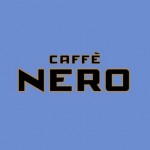
Due to the rapid growth in coffee sector in United Kingdom which was triggered by a trend in social culture and a growth in household expenditure boosted the growth of Caffe Nero which has opened its branches in over 135 cities and 300 branches all over the world. Caffe Nero, based on Italian brand has been successful on capturing the larger share of market slice both in UK and other European countries despite of a intensified competition. However, it has the risk of going head to head with other coffee giants which is a threat to the company. Strengths of the company which helped to capture a huge share of the market from its competitors which resulted in: Profits nearly doubled by the year end (2008) About 8% growth on sales on certain months on consistent basis Market share nearly tripled over 2 years Environmental analysis for Caffe Nero Marketing oriented firm places the customer and satisfaction of the customers’ needs and wants, at the centre of all corporate thinking. He further mentions that a marketing oriented firm identifies the needs and wants of the customer and produce the goods to satisfy them rather than producing first and offering it to customers later. Although the needs and wants of the customers are clear and understandable, it is not always possible to achieve the desired results as there are other factors which affect the decision made by the company and they are known as environmental factors which are micro and macro environmental considerations. Micro-environmental factors Micro-environment is the forces close to the company that affect its ability to serve its customers-the company, market channel firms, customer markets, competitors and publics. Here are the actors in the micro-environment: The company In this part, the company top management should set the company’s mission…
